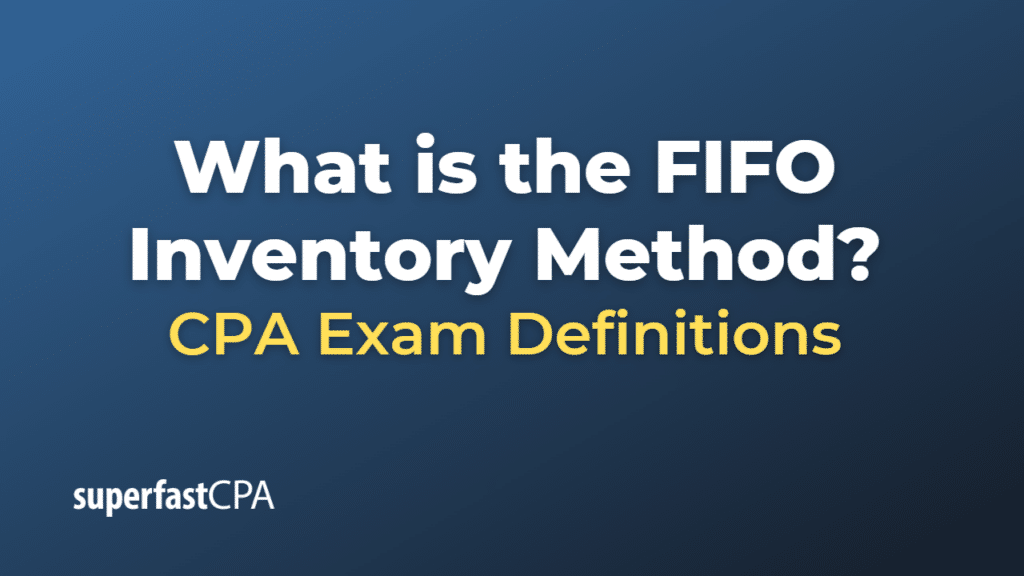FIFO Inventory Method
The First-In, First-Out (FIFO) inventory method is a way of calculating the value of inventory and the cost of goods sold in a business. It is based on the assumption that the first goods purchased or produced (the oldest inventory) are the first to be sold, while the goods purchased or produced more recently (the newer inventory) are sold later.
Here’s how it works:
- Cost of Goods Sold (COGS): Under FIFO, when a sale is made, the cost of the product sold is based on the cost of the oldest inventory. This means that the cost of goods sold on the income statement is based on the cost of the oldest inventory.
- Inventory Valuation: The remaining inventory is valued at the cost of the newer inventory. In a period of rising prices, this means that the value of inventory on the balance sheet may be higher under FIFO than under other inventory valuation methods.
The FIFO method is commonly used in accounting because it is simple to understand, aligns with the normal physical flow of goods in many businesses, and in periods of rising prices, results in lower COGS and higher profits compared to other methods like LIFO (Last-In, First-Out).
However, it’s important to note that FIFO doesn’t necessarily reflect the actual order in which goods are sold, especially for businesses that sell perishable goods or items with an expiry date. These businesses may sell newer items before older ones to avoid spoilage, even while using FIFO for accounting purposes.
Example of the FIFO Inventory Method
Suppose a retailer of electronics, sells a particular model of headphones. They replenish their stock three times, each time with different costs:
- On January 1st, they buy 10 units for $50 each.
- On February 1st, they buy 20 units for $55 each.
- On March 1st, they buy 15 units for $60 each.
Let’s say by the end of March, they have sold 30 units of headphones.
With the FIFO method, the first headphones sold are assumed to be the first ones bought. So, the cost of goods sold (COGS) for the 30 units sold would be calculated as follows:
- The first 10 units sold would be from the January 1st purchase, costing $50 each (10 units * $50 = $500).
- The next 20 units sold would be from the February 1st purchase, costing $55 each (20 units * $55 = $1100).
So, the total COGS under FIFO would be $500 (from the first 10 units) + $1100 (from the next 20 units) = $1600.
The remaining inventory would be valued at the cost of the units purchased on March 1st, which were $60 each. So, the remaining inventory value would be 15 units * $60 = $900.
This is a simplified example, but it illustrates how the FIFO inventory method works. By using FIFO, companies can determine the COGS and the value of the remaining inventory, both of which are crucial for financial reporting and business decision-making.












